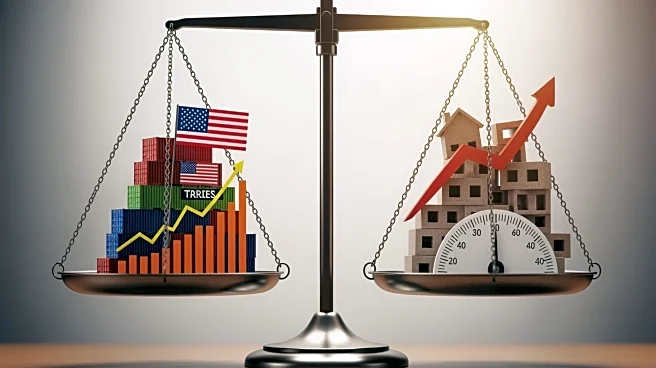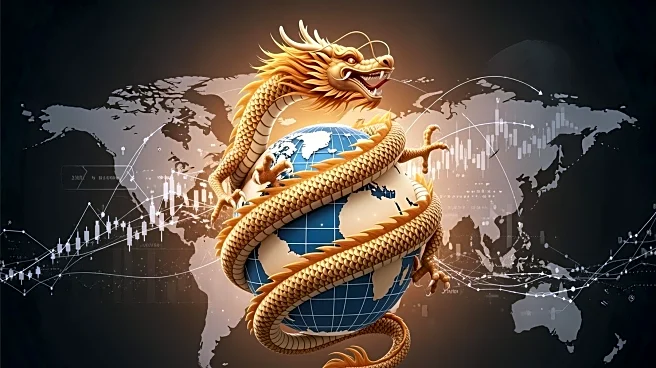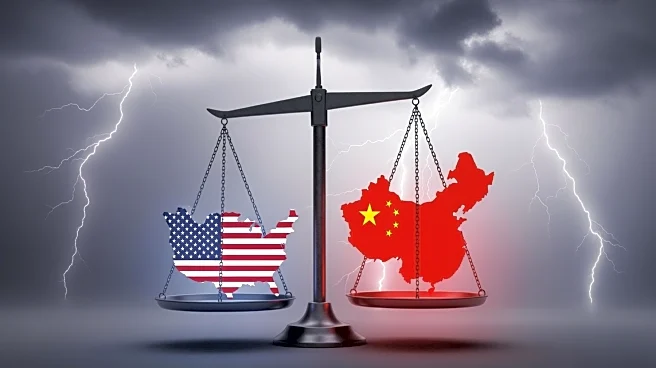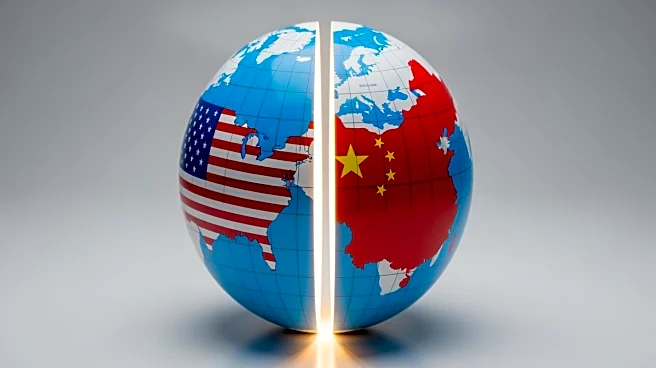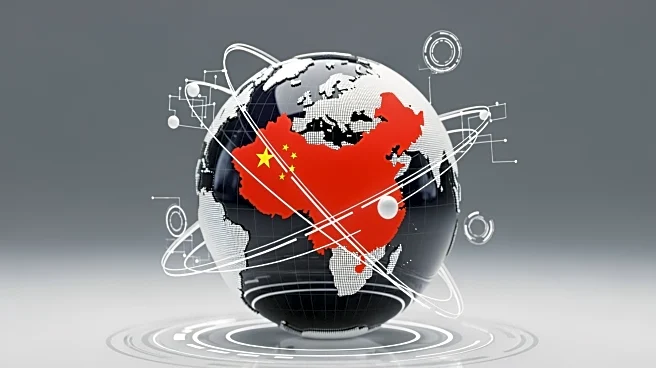What's Happening?
China's economy has experienced a slowdown, growing at an annual rate of 4.8% in the third quarter of 2025, marking the slowest pace in a year. This deceleration is attributed to ongoing trade tensions
with the United States and reduced domestic demand. The previous quarter saw a growth rate of 5.2%. Despite the imposition of higher tariffs by President Trump on Chinese imports, China's exports have remained robust, with a notable increase in global exports. However, exports to the U.S. fell by 27% in September compared to the previous year. The Chinese government is facing additional challenges, including a downturn in the property sector and a decline in consumer confidence, as evidenced by a 7.6% drop in residential property sales from January to September.
Why It's Important?
The slowdown in China's economic growth has significant implications for global markets, particularly the United States, which is a major trading partner. The ongoing trade tensions could exacerbate economic uncertainties, affecting industries reliant on Chinese imports and exports. The decline in China's domestic demand and property market could lead to reduced investment opportunities for U.S. businesses. Additionally, the economic policies and measures China adopts in response to these challenges could influence global economic trends and trade dynamics. Stakeholders in the U.S. economy, including policymakers and businesses, may need to reassess their strategies in light of these developments.
What's Next?
China's government is expected to implement further measures to stimulate consumption and support the property market. Economists anticipate a potential rate cut by China's central bank by the end of the year, which could encourage spending and investment. The outcome of the proposed meeting between President Trump and Chinese leader Xi Jinping during a regional summit could also play a crucial role in shaping future trade relations. The decisions made at China's political meetings, where economic and social policy goals for the next five years are being mapped out, will be closely watched by international observers.
Beyond the Headlines
The economic slowdown in China highlights the broader implications of trade protectionism and geopolitical tensions on global economic stability. The situation underscores the interconnectedness of global markets and the potential ripple effects of economic policies. The challenges faced by China, including the property sector downturn and consumer confidence issues, reflect deeper structural issues that may require long-term solutions. The evolving trade dynamics between the U.S. and China could lead to shifts in global supply chains and influence future trade agreements.
